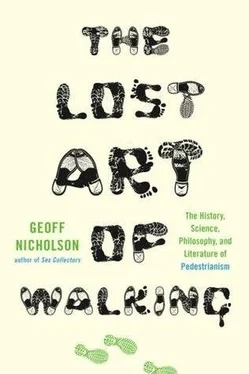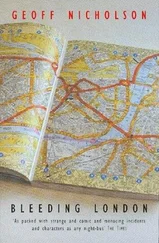By the 1970 sGuo Lin was a living, walking legend, traveling around China spreading the word, teaching her technique to classes that sometimes contained four hundred eager learners. She continued in this way, revered and idolized, until her death in 1984.
There has so far been no large-scale scientific investigation of Guolin Qigong either inside or outside China. However, the anecdotal evidence is sufficiently impressive that millions of people, by no means all of them in China, practice it every day to prevent cancer.
Posited explanations for how or why Guo Lin’s method works are unlikely to convince nonbelievers. One theory is that it simply increases oxygen supply, and this kills cancer cells. If only.
Another suggestion is that it is balancing the yin and the yang, which is, of course, what all Chinese medicine professes to do. Still, if you had cancer and were able to exercise and walk for two hours a day (by no means a given), why wouldn’t you try it? Nowhere can I find any evidence that Taoism ever uses walking as a punishment.
Walking meditations are also employed in Buddhist practice, sometimes called meditation in action. Walking is one of the four asanas, or postures, in which the Buddha is depicted. A practicing Buddhist I know says he finds walking meditation much easier than sitting meditation because the mind doesn’t drift as much when you walk. Walking forces concentration. You become aware of your body, your breathing, the sun, the air, and so on and this all helps to create — he tells me — Mindfulness.
He also tells me that the Buddha encouraged something called the Development of Lovingkindness meditation. While walking, whether in the town or the countryside, in or out of nature, ancient Buddhists would try to exude benevolence. In the towns this went out to their fellow man — in the countryside it went out to wild animals and was considered a very good way to avoid being attacked by snakes.
♦
And so we come to Islam, the only religion I’m aware of that insists its adherents must undertake an arduous walk in the desert. All Muslims are implored to make a journey to Mecca, to participate in the hadj. These pilgrims are not required to walk all the way there (though a few do), but they have to do some walking when they arrive.
Among other rituals, they are required to follow in the footsteps of Muhammad, walking seven times around the Kaaba, the cube-shaped shrine in the center of the Great Mosque in Mecca. The first three circuits are to be taken quickly, the last four slowly, because that’s the way Muhammad circled it. And as they walk, the pilgrims must try to touch the sacred Black Stone, part of the Kaaba, on each circuit.
There is currently a quota system in place: only two million Muslims per year are allowed to make the visit at hadj — many more would do so if they could — but that still represents a staggering number of people crammed into the Great Mosque for these religious circumambulations. It sounds like a recipe for pedestrian chaos rather than spiritual harmony, and film of pilgrims at the Kaaba shows a great seething slow-moving mass, but for obvious reasons I have no personal experience of it.
Someone who did was the English explorer Sir Richard Burton, who visited in 1853, in disguise, and went to elaborate lengths to measure the dimensions of the Kaaba, spending a good many hours walking with the rest of the pilgrims. There was much cursing and pushing, he reports, especially when he monopolized the Black Stone in order to see what it was made of (aerolite, he thought). At last he emerged ‘thoroughly worn out with scorched feet and a burning head — both extremities, it must be remembered, were bare’.
Burton also tells us, ‘Many pilgrims refuse to enter the Ka’aba for religious reasons. Those who tread the hallowed floor are bound never again to walk barefooted’. Is that a religious reason? He was also surprised to find that the Muslim circumambulations went counterclockwise. As an old India hand he was more familiar with the Hindu Pradakshina, the clockwise circular walking performed in Hindu temples around the sanctum sanctorum.
Ziauddin Sardar, a contemporary Muslim academic and journalist, who has completed hadj five times, reports that things have got worse rather than better since Burton’s time. When pilgrims arrive at the Great Mosque, he says, they encounter the mutawwa, the Saudi religious police. To ensure that the walkers keep moving, the mutawwa hit them with long sticks. Sardar writes:
‘Pilgrims performing the tawaf or praying by the Kaaba are constantly hit on the head and asked to move, and not infrequently beaten and ‘shooed’ as though they were cattle.’
He also says that he has witnessed ‘unreported numbers’ of pedestrians on their way to the Great Mosque who suffocate, are crushed underfoot, or die of heat stroke. Personally I find it hard to see the spiritual dimension in this aspect of walking, but then I am, of course, an infidel.
♦
I used to be a bit of a snob about walking in the desert. I wanted millions of acres of untrodden, untouched, and uninhabited desert. If there was a trail or a ranger station or an information board or if I met another walker, I thought this was a terrible defilement, and that my desert walking experience was being spoiled.
Well, that was precious and stupid of me, and I’ve lightened up a lot, for a number of reasons. First, because I know that there aren’t millions of acres of untrodden, untouched, and uninhabited desert available. Second, because I now realize that trails, ranger stations, and information boards can be helpful, might even in certain circumstances save your life. Third, because if you meet someone walking in the desert they’re likely to be, if not exactly a kindred soul, at least someone with a shared interest. The other part of this equation is that most visitors to the desert aren’t very serious walkers, or walkers at all. They drive, stop their car, walk no more than a few yards, take a couple of photographs, and drive on. If you walk even a couple of hundred yards off the beaten track you can be very alone indeed.
Just as important, I’ve learned the pleasures of the undramatic desert. If you go wandering around some celebrated desert attraction, White Sands or Zabriskie Point or the Grand Canyon, well, of course you’re going to run into crowds of people. But if you go walking in, let’s say, the Big Morongo Canyon Preserve in California, which is only about forty miles from Palm Springs, you’ll certainly find some information, some designated trails, and even a rest room, but on most days you can be pretty sure of being the only person there. A desert walk, I realized, doesn’t have to involve rolling sand dunes, fields of cacti, Joshua trees, breathtaking gorges, rattlesnakes, and so forth. It certainly doesn’t have to involve spiritual enlightenment.
♦
The desert, naturally, as St. Anthony proved, is a place of mirages, of fata morgana. The desert walker ‘sees’ all manner of things that may or may not be there, figures viewed through a heat haze appearing to move relentlessly toward you but never quite arriving, or large expanses of sparkling, glittering water that turn out to be nothing but sand.
There are, however, one or two places where the water is not a mirage at all. Badwater in Death Valley is one of these. Badwater is a long, wide salt flat that stretches to the distant blue mountains. At 280 feet below sea level it’s the lowest point in the western hemisphere. When I first visited Badwater, a decade and a half ago, you pulled off the road, parked on the dirt, and went wandering across the scorched, salted surface. Some of us did, but not many. Now there’s a big parking lot, so everybody thinks there must be something really worth seeing and masses of people park and walk.
Читать дальше












